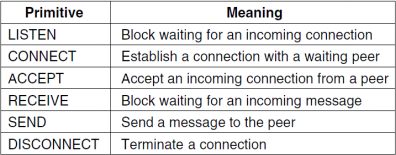COMP90007 Internet Technologies Semester 2, 2020 Assignment 1
Hello, dear friend, you can consult us at any time if you have any questions, add WeChat: daixieit
COMP90007 Internet Technologies
Semester 2, 2020
Assignment 1
Due date: September 4th Friday 4:00 pm (GMT+10)
This assignment is worth 5% of the total marks for the subject. This assignment has 5 questions. The weighting of each question is shown beside the question. Answers must be submitted as a PDF file via the COMP90007 Assignment 1 submission link in Canvas by the due date. Late submissions will attract a penalty of 10% per day (or part thereof).
Please ensure your name and student ID are clearly presented on your submission.
Submission should only contain the question number and the answer (do not repeat the text of questions in your submission). Please present all steps of the solutions for questions involving calculations and/or derivations, otherwise relevant penalties will be applied. Questions can be answered in a few sentences. Excessively long answers will not be accepted. Please type your answers and save as PDF. Handwritten assignments that are scanned will not be accepted.
All questions can be answered by studying the material covered. All work presented should be your original individual effort/work.
Question 1 (1 point)
Given a 10-second video clip with frame rate 30 fps (frames per second), each frame contains 1280 x 720 pixels, which needs 3 bytes/pixel. Assume the video clip is stored as an uncompressed simple video file. If the distance between the sender and the receiver is 10,000 km, what is the latency to send this video clip 1) over a 56kbps simple modem? 2) over a 100Mbps broadband link? (Assume the speed of the signal for both cases is 200,000 km/second).
Question 2 (1 point)
Given a channel with 8 kHz bandwidth,
(1) if it’s a noisy channel, what is the minimum signal-to-noise ratio (in dB) that can support a data rate of 128kbps?
(2) if it’s a noiseless channel, how should we send the data to support a data rate of 128kbps?
Question 3 (1 point)
We are transmitting 48-bit data, using Hamming code to correct errors. What is the minimum number of check bits needed to ensure that the receiver can correct a single-bit error? Where should we put these check bits? List the positions of all the check bits.
Question 4 (1 point)
What are the benefits of having layered structure in networks? List at least two benefits. (Please answer this question briefly in a few sentences. Excessively long answers will not be accepted.)
Question 5 (1 point)
Pick an HTTP based website of your choice and capture the packets exchanged using Wireshark, depicting the trace created when you access a website via a web browser/wget. (Note: Please review the steps and context that was covered in the Wireshark Lab exercise in Week 2 for this question.)
(1) What are the IP addresses of the source (requesting the website) and destination (serving the website)? What steps should we undertake to validate that these IP addresses belong to the aforementioned source and destination and not some other server(s), etc?
(2) We have introduced that there are six service primitives for implementing a simple connection-oriented service (as shown in Table 1, source: Ch 1.3.4 Tanenbaum & Wetherall, 2011). Select any two of the service primitives from Table 1and use the TCP stream captured in your Wireshark trace from the previous subsection, do the following - provide screenshots of your Flow graph diagram and explain what information in this graph corresponds to the two primitives you selected, and why? Please ensure that the graphs are legible in the PDF document, else relevant penalties will be applied.

Table 1 Service Primitives
2023-07-13